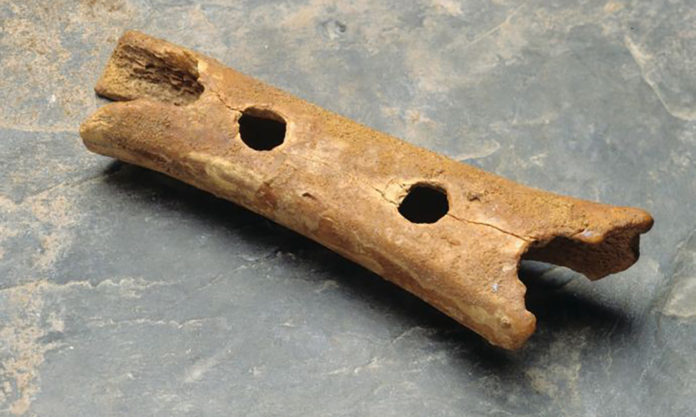
A team of archaeologists discovered a flute-like instrument made of bone in a cave in Slovenia. Believed to have been crafted by Neanderthals between 50,000 and 60,000 years ago, the instrument changed what science believed about the mental capacity and culture of ancient humans.
The flute was carved from the femur of a cave bear and was found near a hearth, along with a collection of stone and bone tools. Its discovery elicited some controversy, as Neanderthals were not thought to be capable of this kind of creativity. Skeptics suggested the wind holes were chewed randomly by a carnivore, and the flute only a product of the archaeologists imaginations.
However, some creative forensics showed that ancient wolf and hyena teeth would not have matched the marks on the bones. While a cave bear’s teeth would be the right size, it would have needed to bite repeatedly in the exact same spots to make the rounded – and evenly spaced – openings. Further, the bite pressure needed to make the holes would likely have shattered the instrument. The experiments also showed that the tools available to the Neanderthals could have pierced the bone without making conventional tooling marks. They also showed that the instrument could make music.
What else could we have gotten wrong about ancient humans? In what other ways might they have been further evolved? Who made the instrument? What affect did it have on the local people and culture? What happens next?











